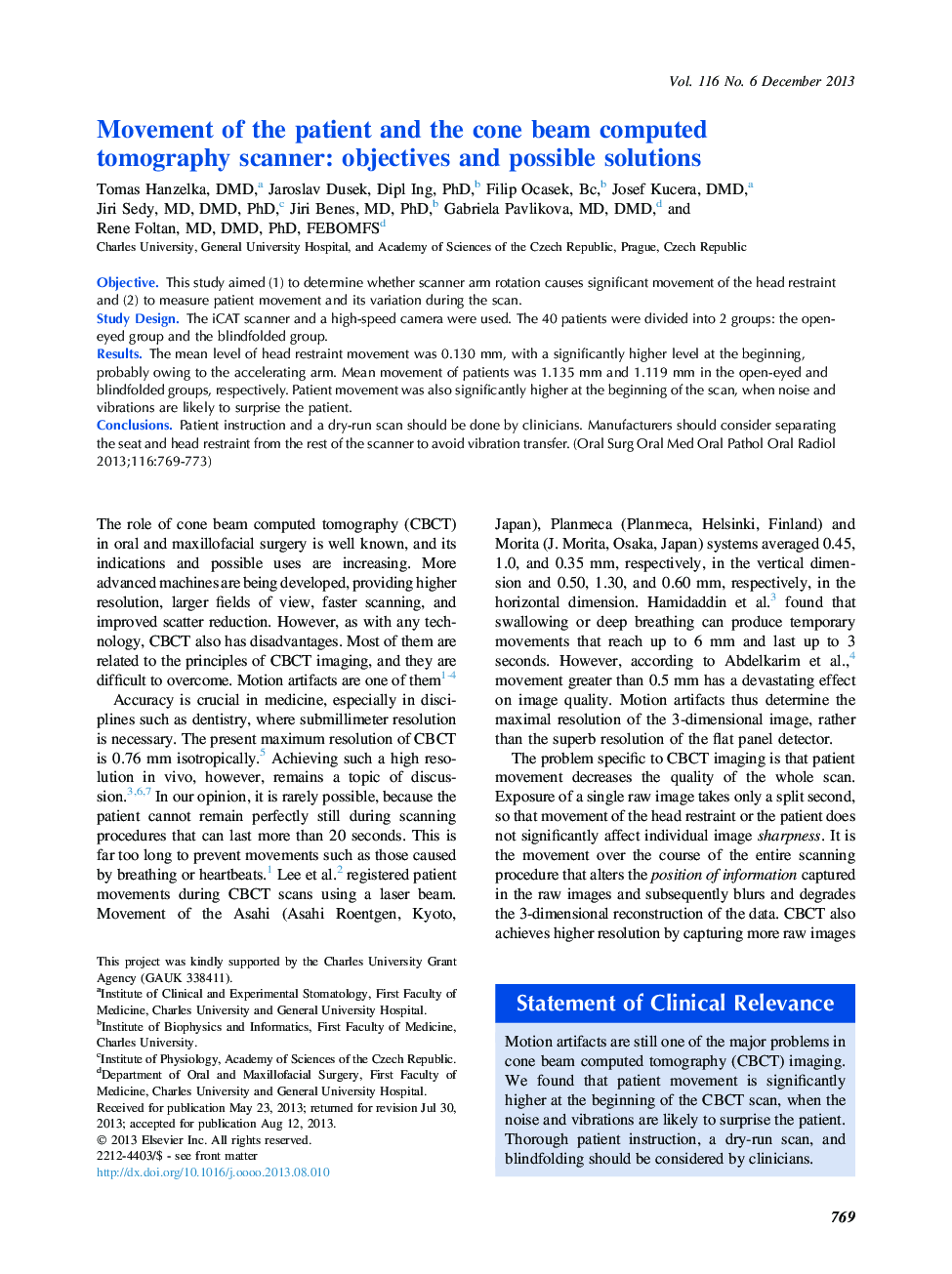| Article ID | Journal | Published Year | Pages | File Type |
|---|---|---|---|---|
| 6057204 | Oral Surgery, Oral Medicine, Oral Pathology and Oral Radiology | 2013 | 5 Pages |
ObjectiveThis study aimed (1) to determine whether scanner arm rotation causes significant movement of the head restraint and (2) to measure patient movement and its variation during the scan.Study DesignThe iCAT scanner and a high-speed camera were used. The 40 patients were divided into 2 groups: the open-eyed group and the blindfolded group.ResultsThe mean level of head restraint movement was 0.130 mm, with a significantly higher level at the beginning, probably owing to the accelerating arm. Mean movement of patients was 1.135 mm and 1.119 mm in the open-eyed and blindfolded groups, respectively. Patient movement was also significantly higher at the beginning of the scan, when noise and vibrations are likely to surprise the patient.ConclusionsPatient instruction and a dry-run scan should be done by clinicians. Manufacturers should consider separating the seat and head restraint from the rest of the scanner to avoid vibration transfer.
